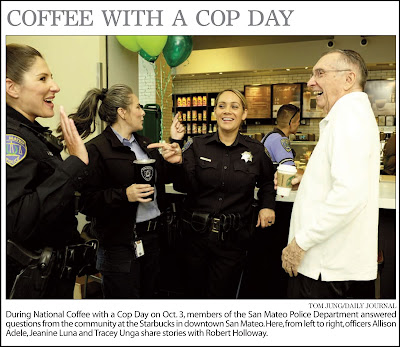 |
| 1/15 second, F 5.6, ISO 1000 |
Visual Elements: I wanted the image to have the following visual elements:
- The Brewing Company's Name to establish a location context,
- The industrial ambiance to add some visual interest to the background, and
- Anything else I could find.
- The skylight visible at the roof line in the background which created the accent on the floor, camera right,
- Another skylight on the wall me,
- The accent lights on the wall behind the bar, and
- A ceiling light that provided the warm accent at camera right.
 |
| 1/16 of a second, F 6.4, ISO 800, with 2 Nikon speedlights (see arrows) aimed towards the ceiling |
Key Lighting: The main, or Key light was provided by a Adorama Li-on Flash shot through a white shoot-through umbrella mounted on a Manfrotto Compact Monopod, both of which store neatly inside of a Vangard Veo 37 camera bag. While not particularly sturdy, the monopod extends to almost 5' and can easily support a single speedlight and an umbrella, if held vertically. This allows me to extend the monopod to full length and, if you can rest it on a chair, an assistant can get the flash almost 7' off the ground.
 |
| 1/8 second, F 5.6, ISO 1000 |
The waiting had a serious consequence: The natural ambient light provided by the skylights was fading, and I had to lengthen my exposure if I was going to use it in the exposure. I was now wrestling with the background lighting since my flash would take care of the foreground. This was one of my first test shots, so I was free to adjust exposure, so long as it could be done quickly.
 |
| 1/2 second, F 5.6, ISO 1000 |
If you compare the exposure data from the image at the top of this post, you can see that I had to increase my exposure by three stops to maintain detail in the background. Holding still for 1/4 of a second should be considered unwise based on the "inverse focal length rule", created to give you the approximate longest recommended exposure for a given focal length of lens. EXIF data for the image lists the lens focal length at 13.8 mm, which I multiplied by 1.5 to compensate for the crop factor of the Fuji's APS sized sensor. With an effective focal length of 20.25 mm, the rules concludes the the longest, wobble-free exposure should be 1/20.25, or about 1/20 of a second. The enlarge portion of the image clearly shows the effects of my long exposure time, but the beer menu in the background is sufficiently sharp for our purposes.
I am satisfied by the results, even though evidence of my attempts to partially illuminate the ceiling details are not readily apparent. In situations like this, the final composition must be modified on the fly, especially when the size of the group starts to grow, as it did here. I found comfort in knowing that whatever shooting angle I finally took, the speedlights had my background realistically illuminated.
The photo ran a week later, along with a photo for Tip A Cop, and fundraiser held by the San Mateo Police Department to raise money for the Special Olympics.


























